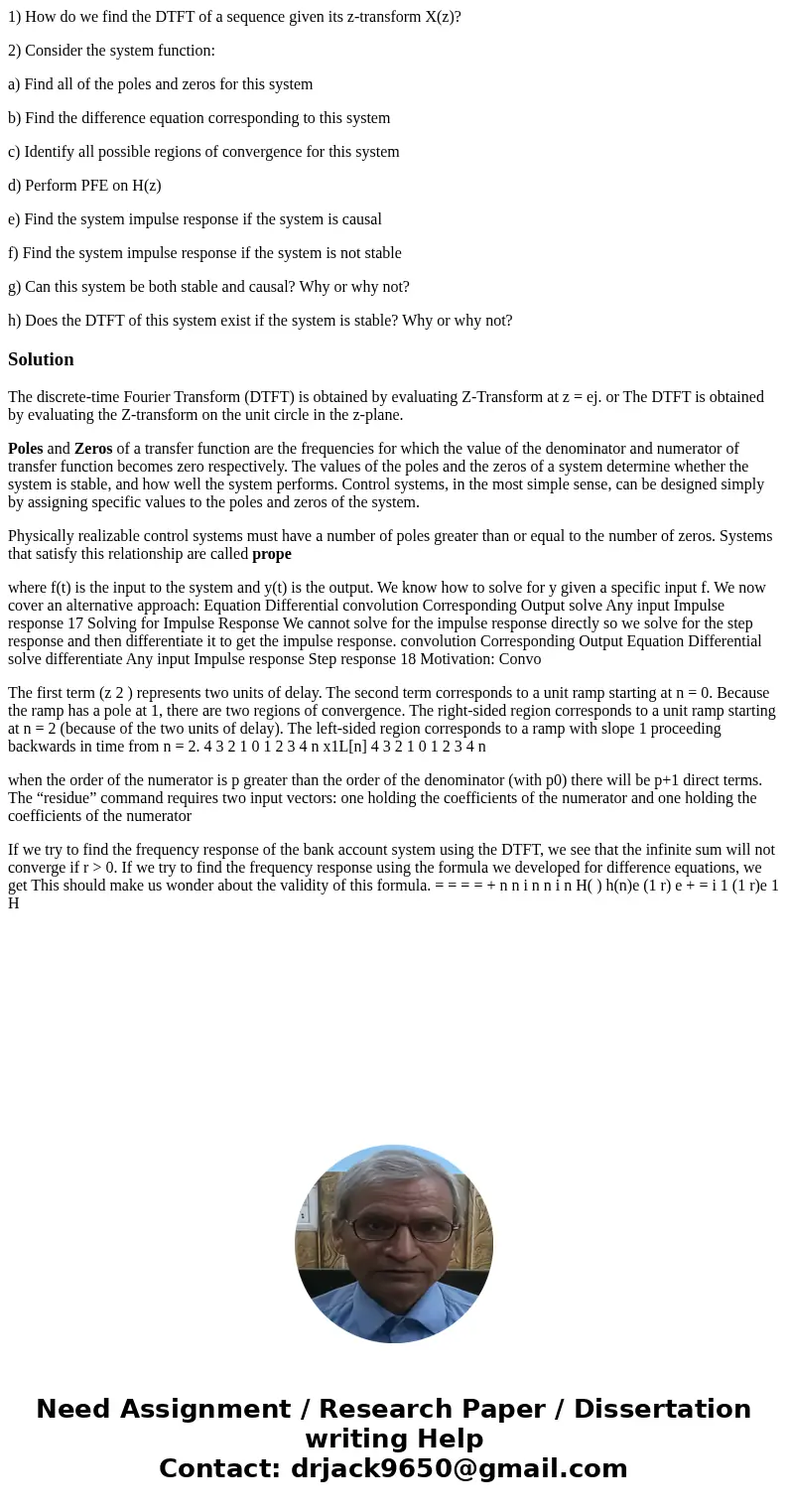1 How do we find the DTFT of a sequence given its ztransform
1) How do we find the DTFT of a sequence given its z-transform X(z)?
2) Consider the system function:
a) Find all of the poles and zeros for this system
b) Find the difference equation corresponding to this system
c) Identify all possible regions of convergence for this system
d) Perform PFE on H(z)
e) Find the system impulse response if the system is causal
f) Find the system impulse response if the system is not stable
g) Can this system be both stable and causal? Why or why not?
h) Does the DTFT of this system exist if the system is stable? Why or why not?
Solution
The discrete-time Fourier Transform (DTFT) is obtained by evaluating Z-Transform at z = ej. or The DTFT is obtained by evaluating the Z-transform on the unit circle in the z-plane.
Poles and Zeros of a transfer function are the frequencies for which the value of the denominator and numerator of transfer function becomes zero respectively. The values of the poles and the zeros of a system determine whether the system is stable, and how well the system performs. Control systems, in the most simple sense, can be designed simply by assigning specific values to the poles and zeros of the system.
Physically realizable control systems must have a number of poles greater than or equal to the number of zeros. Systems that satisfy this relationship are called prope
where f(t) is the input to the system and y(t) is the output. We know how to solve for y given a specific input f. We now cover an alternative approach: Equation Differential convolution Corresponding Output solve Any input Impulse response 17 Solving for Impulse Response We cannot solve for the impulse response directly so we solve for the step response and then differentiate it to get the impulse response. convolution Corresponding Output Equation Differential solve differentiate Any input Impulse response Step response 18 Motivation: Convo
The first term (z 2 ) represents two units of delay. The second term corresponds to a unit ramp starting at n = 0. Because the ramp has a pole at 1, there are two regions of convergence. The right-sided region corresponds to a unit ramp starting at n = 2 (because of the two units of delay). The left-sided region corresponds to a ramp with slope 1 proceeding backwards in time from n = 2. 4 3 2 1 0 1 2 3 4 n x1L[n] 4 3 2 1 0 1 2 3 4 n
when the order of the numerator is p greater than the order of the denominator (with p0) there will be p+1 direct terms. The “residue” command requires two input vectors: one holding the coefficients of the numerator and one holding the coefficients of the numerator
If we try to find the frequency response of the bank account system using the DTFT, we see that the infinite sum will not converge if r > 0. If we try to find the frequency response using the formula we developed for difference equations, we get This should make us wonder about the validity of this formula. = = = = + n n i n n i n H( ) h(n)e (1 r) e + = i 1 (1 r)e 1 H

 Homework Sourse
Homework Sourse